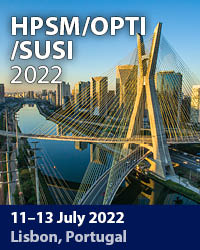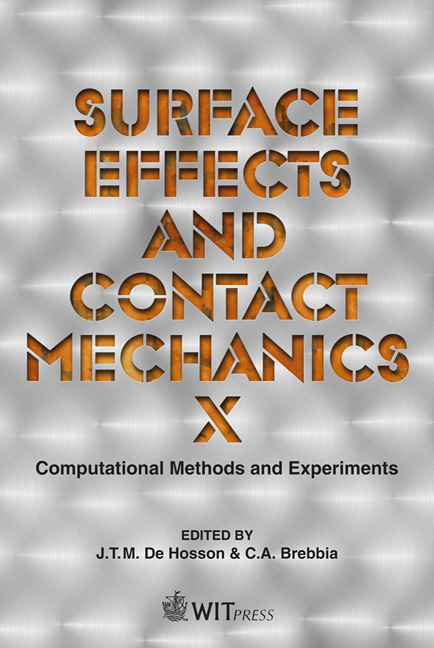Experimental And Numerical Validation Of An Enhanced Cylindrical Contact Force Model
Price
Free (open access)
Transaction
Volume
71
Pages
12
Page Range
49 - 60
Published
2011
Size
3,565 kb
Paper DOI
10.2495/SECM110051
Copyright
WIT Press
Author(s)
C. Pereira, A. Ramalho & J. Ambrósio
Abstract
Many applications in contact mechanics require that the contact force is expressed in terms of a pseudo-indentation. For spherical contact and when the assumptions of the Hertz contact model are fulfilling, it provides a continuous contact model which is able and simple to use. For cylindrical contact, Johnson proposed an accurate model but the contact force is defined as an implicit function of indentation. It requires therefore a numerical iterative procedure to obtain the contact force, which represents a difficulty when implemented in a computational code for impact simulation. A new enhanced cylindrical contact model that has the simplicity of the Hertz contact model and the accuracy of the Johnson cylindrical model was recently proposed by the authors. An experimental validation of new enhanced contact model to analyze the internal contact for different clearance and load values is presented and discussed in this work. It is concluded that the experimental validation is limited to a narrower range of conformal contact conditions. Therefore, a numerical study was conducted to evaluate the suitability of the enhanced model to analyze the internal elastostatic frictionless contact between cylindrical bodies for very low clearances and different loads. Depending on clearance and load values, the values estimated from the enhanced model were compared with numerical or experimental results. The validation of the new enhanced contact force model has been done therefore applying a hybrid methodology. Keywords: contact mechanics, internal cylindrical contact, conformal contact, contact dynamics, finite element models, experimental validation.
Keywords
contact mechanics, internal cylindrical contact, conformal contact, contact dynamics, finite element models, experimental validation





